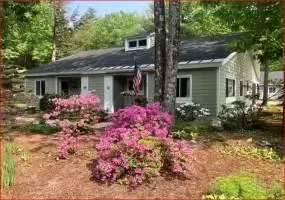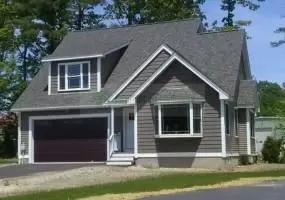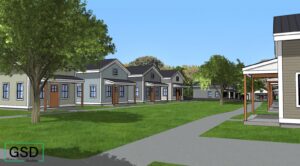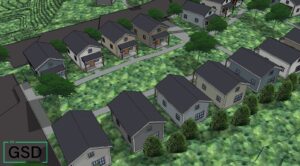Choosing an Assisted Living Community
How to Choose an Assisted Living Facility: A Comprehensive Guide
TLDR:
Choosing an assisted living community requires careful consideration of various factors, including care needs, location, amenities, staff qualifications, safety measures, financial aspects, and reputation. By following the expert advice and guidelines provided in this comprehensive guide, you can make an informed decision that ensures the well-being and happiness of your loved ones in their new home.
Remember, finding the perfect assisted living facility is a personal and individualized process. Take your time, ask questions, and trust your instincts to make the best choice for your loved ones’ future.
Choosing the right assisted living facility for your loved ones is a significant decision. This comprehensive guide provides valuable insights and expert tips to help you navigate the selection process with confidence. From assessing care needs to exploring amenities and evaluating the facility’s reputation, we cover all the essential factors to consider.
One of the most crucial steps in choosing an assisted living facility is evaluating the specific care requirements of your loved one. By understanding their physical, cognitive, and emotional needs, you can find a facility that can provide the necessary support and assistance.
Here are some key considerations:
Evaluate Physical Needs:
Assess the level of assistance required for activities of daily living (ADLs). These include tasks like bathing, dressing, grooming, toileting, and eating. Determine if your loved one needs help with any of these activities and to what extent.
Consider Cognitive Needs:
If your loved one is living with conditions such as dementia or Alzheimer’s, specialized memory care may be necessary. Look for facilities that offer programs and services designed to support individuals with memory impairments. Ensure the facility has trained staff who understand the unique needs of individuals with cognitive decline.
Assess Emotional Needs:
Consider your loved one’s emotional well-being and socialization requirements. Do they need opportunities for social engagement, recreational activities, and companionship? Look for facilities that provide a range of social programs, outings, and community events to promote emotional well-being and a sense of belonging.
Medication Management:
Evaluate if your loved one needs assistance with medication management. Determine if the facility has trained staff who can administer medications and ensure proper dosage and timing. Additionally, check if the facility can accommodate any specific medical conditions that require specialized care or monitoring.
Mobility Support:
Assess your loved one’s mobility limitations and determine the level of assistance they require. If they need help with walking, transferring, or using mobility aids like wheelchairs or walkers, ensure the facility has appropriate accessibility features and trained staff to provide mobility support.
By thoroughly evaluating the specific care needs of your loved one, you can narrow down the options and find an assisted living facility that can cater to their unique requirements. Remember to involve your loved one in the decision-making process and consider their preferences and desires for their living environment.
Assistance Requirements in Assisted Living
When selecting an assisted living facility, it is crucial to identify the specific assistance requirements of your loved one. This evaluation ensures that they receive the necessary support and care for a comfortable and fulfilling lifestyle. Key aspects to consider include personal care, medication administration, and therapy services. By understanding these assistance needs, you can make an informed decision that promotes their well-being and enhances their quality of life.
Personal Care:
One of the primary considerations is assessing the activities of daily living (ADLs) that your loved one may require assistance with. These activities encompass essential tasks such as bathing, dressing, grooming, and toileting. It is important to evaluate their ability to maintain personal hygiene and manage self-care activities independently. Additionally, instrumental activities of daily living (IADLs) should be considered, including tasks like meal preparation, housekeeping, laundry, transportation, and managing finances and medications.
Medication Administration:
The management of medications is a critical aspect of care. Assess the complexity of your loved one’s medication regimen and determine whether they need assistance in adhering to prescribed schedules. Evaluate their ability to self-administer medications safely and effectively. It is also essential to inquire about the availability of skilled nursing staff who can administer medications, monitor vital signs, and provide medical care as needed. Consider the facility’s policies and procedures for medication administration and the proper storage of medications.
Therapy Services:
Depending on your loved one’s specific needs, therapy services may be required. Physical therapy aims to improve mobility, strength, and balance. Assess whether the facility provides on-site therapy services or has partnerships with external providers. Occupational therapy focuses on enhancing independence in daily activities, such as dressing, grooming, and meal preparation. Determine if the facility offers specialized equipment or modifications to support functional abilities. Additionally, speech therapy may be necessary to address communication difficulties, swallowing disorders, or cognitive impairments. Evaluate the availability of speech-language pathologists and communication enhancement programs.
Housekeeping Services:
Assessing the availability of housekeeping services is crucial to maintaining a clean and organized living space for your loved one. Inquire about the frequency and extent of housekeeping assistance provided by the facility. This may include routine cleaning of common areas, assistance with laundry, linen services, and maintenance of individual living spaces. Adequate housekeeping support ensures that your loved one can live in a hygienic and pleasant environment without the burden of household chores.
Transportation Services:
Consider the availability of transportation services when choosing an assisted living facility. Evaluate whether the facility provides transportation for medical appointments, shopping trips, social outings, and other essential errands. Access to reliable transportation ensures that your loved one can remain engaged in the community, attend appointments, and participate in recreational activities. Inquire about the scheduling, availability, and any associated costs or limitations of the transportation services offered.
Meal Preparation and Dining:
Dietary considerations are crucial in maintaining good health and well-being. Evaluate the meal services provided by the assisted living facility, including the quality, variety, and nutritional value of the meals. Inquire about any special dietary accommodations for specific health conditions or personal preferences. Assess whether meals are prepared on-site, taking into account any specific cultural or dietary requirements. Additionally, consider the dining experience and social aspects, such as communal dining areas and opportunities for social interaction during meals.
Addressing Healthcare Needs and On-Site Medical Professionals When Choosing Assisted Living
When considering assisted living options for your loved one, it’s essential to evaluate whether the facility can accommodate specific healthcare needs and provide access to on-site medical professionals. This ensures that your loved one receives the necessary medical attention and support, contributing to their overall well-being and peace of mind. In this section, we will explore the importance of addressing healthcare needs and the benefits of having on-site medical professionals in an assisted living facility.
Assessing Specific Healthcare Needs:
Before selecting an assisted living facility, it’s crucial to assess your loved one’s specific healthcare needs. This includes considering any chronic conditions, mobility limitations, medication management requirements, and specialized care needs. Evaluate whether the facility has the resources, expertise, and staff to cater to these specific healthcare needs. Inquire about their experience in handling medical conditions, the availability of specialized care programs, and the level of assistance provided in managing medications and treatments.
On-Site Medical Professionals:
One significant advantage of some assisted living facilities is the presence of on-site medical professionals. These professionals can range from registered nurses to licensed practical nurses or certified nursing assistants. Having medical professionals on-site offers several benefits. They can provide regular health assessments, monitor medication administration, and respond promptly to medical emergencies. On-site medical professionals also collaborate with residents’ primary care physicians and specialists, ensuring seamless coordination of healthcare services and timely communication of any changes or concerns.
Access to Healthcare Services:
Apart from on-site medical professionals, assess the availability of healthcare services within or near the assisted living facility. Inquire about the proximity of hospitals, clinics, and other healthcare providers. Determine if the facility has established partnerships or arrangements for residents to access specialized medical services, such as physical therapy, occupational therapy, or speech therapy. Having convenient access to healthcare services ensures that your loved one can receive comprehensive care without unnecessary travel or disruptions.
Emergency Response Systems:
Evaluate the emergency response systems in place at the assisted living facility. Inquire about the presence of emergency call systems or personal emergency response devices that residents can use to summon assistance during medical emergencies. These systems provide an added layer of security and peace of mind, allowing prompt response and intervention in critical situations.
Health Conditions in Assisted Living: Addressing Chronic Care and Specialized Needs
When selecting an assisted living facility, it’s crucial to consider the health conditions of your loved one and ensure that the facility can provide adequate care and support. Whether your loved one has chronic health conditions, disabilities, or specific care needs, addressing these factors is essential for their overall well-being and quality of life. In this section, we will delve into the importance of considering health conditions when choosing an assisted living facility and how to ensure that their specific requirements are met.
Assessing Chronic Health Conditions:
The first step in evaluating an assisted living facility is to assess your loved one’s chronic health conditions. These may include conditions such as heart disease, arthritis, diabetes, or respiratory ailments. Consider the level of assistance and specialized care required to manage these conditions effectively. Determine if the facility has experience in providing care for individuals with similar health conditions and if they have a dedicated care plan tailored to address these specific needs.
Specialized Care Requirements:
Apart from chronic health conditions, your loved one may have specialized care requirements. These needs can vary widely, from mobility assistance and assistance with activities of daily living (ADLs) to specific dietary restrictions or medication management protocols. Evaluate if the facility can accommodate these specialized care needs and if they have trained staff or resources to support your loved one’s requirements. Inquire about their expertise in providing care for individuals with disabilities or specific conditions, such as memory care for dementia or Alzheimer’s.
Resources and Expertise:
To ensure adequate care for your loved one’s health conditions, it’s crucial to verify that the assisted living facility has the necessary resources and expertise. Inquire about the qualifications and training of the staff members who will be responsible for providing care. Assess if the facility has access to healthcare professionals, such as registered nurses or licensed practical nurses, who can address complex medical needs. Additionally, consider if the facility has partnerships or affiliations with local healthcare providers or specialists who can offer additional support when needed.
Personalized Care Plans:
Each resident in an assisted living facility deserves personalized care based on their unique health conditions. Inquire about the facility’s approach to developing individualized care plans. Assess if they conduct comprehensive assessments to determine the specific needs of each resident and if these care plans are regularly reviewed and updated. Personalized care plans should address medication management, therapy services, and any specialized care requirements, ensuring that your loved one receives the appropriate level of care and attention.
Location and Accessibility in Assisted Living: Finding the Perfect Setting for Your Loved One
Choosing the right location for an assisted living facility is a crucial factor in ensuring the well-being and happiness of your loved one. The location should not only be convenient for family visits but also offer easy access to medical facilities and a supportive community. In this section, we will explore the significance of location and accessibility when selecting an assisted living facility and provide guidance on finding the perfect setting for your loved one.
Proximity to Family, Friends, and Medical Facilities:
When considering the location of an assisted living facility, proximity to family, friends, and medical facilities plays a vital role. Being close to loved ones allows for regular visits, which can significantly contribute to the emotional well-being of your loved one. Additionally, consider the distance to medical facilities, such as hospitals, clinics, and pharmacies, as easy access to healthcare services is crucial for their overall health. Research nearby medical facilities to ensure they offer the necessary services your loved one may require.
Transportation Options and Accessibility:
Assessing transportation options and accessibility is essential, particularly for residents with mobility challenges. Look for assisted living facilities that provide transportation services or have easy access to public transportation. This ensures that your loved one can maintain their independence and participate in social activities or medical appointments outside the facility. Additionally, evaluate the facility’s accessibility features, such as ramps, handrails, and elevators, to ensure they can comfortably navigate the premises.
Researching the Local Community and Amenities:
Understanding the local community surrounding the assisted living facility is crucial for your loved one’s overall experience. Research the amenities and services available in the vicinity, such as parks, libraries, shopping centers, and recreational facilities. These amenities contribute to the quality of life and offer opportunities for social engagement and leisure activities. Additionally, consider the availability of support groups, clubs, and cultural events that align with your loved one’s interests and preferences.
Safety and Security:
While evaluating the location, prioritize safety and security measures. Look for facilities situated in safe neighborhoods with low crime rates. Inquire about the facility’s security protocols, such as controlled access, surveillance systems, and staff availability around the clock. Safety should be a top priority to ensure your loved one feels secure and protected in their new living environment.
Environmental Factors:
Take into account environmental factors that may affect your loved one’s well-being. Consider the climate and weather conditions of the location. Extreme temperatures or weather patterns that pose health risks should be carefully evaluated. Additionally, assess the noise level and overall ambiance of the area to ensure it aligns with your loved one’s preferences and comfort.
Facility Amenities and Services:
- Evaluating the range of amenities offered, such as dining options, recreational activities, and fitness programs
- Examining the availability of on-site medical care, medication management, and therapy services
- Considering additional services like housekeeping, laundry, transportation, and social events
When choosing an assisted living facility, it’s crucial to consider the amenities and services offered to ensure a comfortable and fulfilling lifestyle for your loved one. From dining options and recreational activities to on-site medical care and additional support services, these amenities can significantly impact the quality of life in assisted living. In this section, we will delve into the importance of facility amenities and services, guiding you on evaluating and selecting the right assisted living facility that meets your loved one’s needs.
Range of Amenities:
Assessing the range of amenities provided by the facility is essential for enhancing the assisted living experience. Look for facilities that offer diverse dining options to cater to different dietary needs and preferences. Evaluate the quality and variety of meals, as well as the flexibility in accommodating special dietary requirements. Consider recreational activities such as hobby groups, arts and crafts, fitness programs, and social events that foster engagement, socialization, and overall well-being.
Availability of On-Site Medical Care:
Examine the availability of on-site medical care within the assisted living facility. This includes evaluating the presence of qualified medical professionals, such as registered nurses or licensed practical nurses, who can address medical needs promptly. Consider whether the facility has partnerships with healthcare providers or specialists who can visit the facility regularly to provide specialized care or consultations. Additionally, inquire about medication management services to ensure the proper administration and monitoring of medications.
Therapy Services and Rehabilitation:
Consider the availability of therapy services and rehabilitation programs within the facility. These services can include physical therapy, occupational therapy, and speech therapy, aimed at improving mobility, functionality, and overall well-being. Inquire about the qualifications and experience of the therapy staff and the range of therapeutic interventions offered. Access to these services within the facility can contribute to your loved one’s recovery, maintenance of independence, and overall quality of life.
Additional Support Services:
Beyond medical care and therapy, evaluate the availability of additional support services offered by the assisted living facility. These may include housekeeping, laundry, transportation, and social events. Housekeeping services ensure a clean and well-maintained living environment for your loved one. Transportation services provide convenient access to medical appointments, shopping, and social outings. Social events and activities promote socialization and a sense of community among residents.
Staff Qualifications and Care Philosophy:
- Assessing the qualifications, experience, and training of the facility’s staff members
- Understanding the facility’s care philosophy and approach to personalized care
- Inquiring about staff-to-resident ratios and the availability of skilled nursing or specialized care professionals
The qualifications and care philosophy of the staff in an assisted living facility are vital considerations when selecting the right community for your loved one. Staff members play a crucial role in providing personalized care, maintaining safety, and promoting well-being. In this section, we will explore the importance of staff qualifications and care philosophy in assisted living, guiding you in assessing these aspects to ensure quality care for your loved one.
Assessing Staff Qualifications:
When Choosing an assisted living community, it’s essential to assess the qualifications, experience, and training of the staff members. Inquire about their educational background, certifications, and relevant experience in providing care for seniors. Ask about ongoing training and professional development programs that enhance their skills and knowledge in senior care. Additionally, consider staff turnover rates, as consistent and experienced caregivers can contribute to a stable and nurturing environment for residents.
Understanding Care Philosophy:
Each assisted living facility may have its own unique care philosophy and approach to personalized care. Take the time to understand the facility’s core values and principles when it comes to resident care. Does the facility prioritize individual needs, dignity, and independence? Are they committed to promoting a sense of community and fostering social connections among residents? By aligning the care philosophy with your loved one’s preferences and values, you can ensure a comfortable and supportive living environment.
Consider Staff-to-Resident Ratios When Choosing an Assisted Living Community:
Inquire about the staff-to-resident ratios within the facility. Adequate staffing is crucial for providing personalized attention, prompt assistance, and maintaining a safe environment. A lower staff-to-resident ratio allows staff members to spend more quality time with each resident, addressing their specific needs and providing the necessary support. Additionally, ask about the availability of skilled nursing or specialized care professionals, such as registered nurses or therapists, who can provide advanced care when needed.
Promoting Person-Centered Care:
Look for facilities that prioritize person-centered care, tailoring services and support to meet the unique needs and preferences of each resident. This approach focuses on maintaining residents’ autonomy, dignity, and overall well-being. Inquire about the facility’s strategies for assessing residents’ preferences, creating personalized care plans, and involving residents and their families in decision-making processes. A person-centered care approach fosters a nurturing and empowering environment for your loved one.
Conclusion:
Staff qualifications and care philosophy are crucial factors in ensuring quality care and a positive living experience in an assisted living facility. By assessing staff qualifications, understanding the care philosophy, considering staff-to-resident ratios, and promoting person-centered care, you can make an informed decision that aligns with your loved one’s needs and values. Remember, the expertise, dedication, and compassionate approach of the staff play a vital role in enhancing the overall well-being and satisfaction of residents in assisted living.
Safety and Security in Assisted Living: Creating a Protected Environment for Seniors
- Ensuring the facility has proper safety measures in place, including emergency response systems and secure entrances
- Inquiring about staff background checks, training in emergency procedures, and disaster preparedness protocols
- Checking for any history of safety violations or complaints against the facility
Safety and security are paramount when choosing an assisted living facility for your loved one. Creating a secure and protected environment ensures their well-being and peace of mind. In this section, we will delve into the essential aspects of safety and security in assisted living, guiding you in assessing these factors to make an informed decision.
Proper Safety Measures:
One of the primary considerations is whether the facility has implemented adequate safety measures. Inquire about the presence of emergency response systems, such as call buttons or pendant alarms, that residents can use to summon assistance when needed. Additionally, ensure that the entrances and exits are secure and properly monitored to prevent unauthorized access. The facility should have safety protocols and procedures in place to address emergencies and ensure the prompt and efficient response of staff members.
Staff Background Checks and Training:
To maintain a safe environment, it’s crucial to verify that the facility conducts thorough background checks on all staff members. Inquire about the screening process to ensure that employees have been properly vetted. Additionally, ask about staff training in emergency procedures, including first aid and CPR. A well-trained staff is better equipped to handle unexpected situations and provide immediate assistance when required. Furthermore, inquire about the facility’s disaster preparedness protocols to ensure they have plans in place for various contingencies.
History of Safety Violations:
Research the facility’s history of safety violations or complaints to gain insight into its track record. Check with relevant regulatory agencies or online resources that provide information on assisted living facilities. A facility with a history of safety violations or recurring complaints may raise concerns about its commitment to maintaining a safe and secure environment. Choose a facility with a clean track record and positive reviews to ensure your loved one’s well-being.
Fire Safety Measures:
Fire safety is a critical aspect of ensuring the security of residents. Inquire about the facility’s fire prevention measures, including the presence of smoke detectors, fire sprinkler systems, and regular fire safety inspections. Ask about staff training in fire evacuation procedures and the availability of evacuation plans and routes. A well-prepared facility will have robust fire safety measures in place to protect residents in the event of an emergency.
Conclusion: When choosing an assisted living facility, prioritizing safety and security is essential to ensure the well-being of your loved one. Consider factors such as proper safety measures, staff background checks and training, history of safety violations, and fire safety measures. By carefully assessing these aspects, you can select a facility that provides a secure environment for your loved one to thrive and enjoy a worry-free lifestyle.
Navigating the Cost Factors: Understanding Fees, Financial Assistance, and Contract Terms
- Understanding the cost structure and fee schedules, including monthly fees, additional charges, and payment options
- Exploring potential financial assistance options, such as Medicaid, long-term care insurance, or veteran’s benefits
- Reviewing the facility’s policies on price increases and contract terms
Understanding the cost structure and financial aspects of assisted living is crucial when selecting a facility for your loved one. In this section, we will explore the various factors that contribute to the overall cost, discuss potential financial assistance options, and provide insights into reviewing the facility’s policies and contract terms.
Cost Structure and Fee Schedules:
To make an informed decision, it’s essential to have a clear understanding of the cost structure and fee schedules. Evaluate the monthly fees and determine what services and amenities are included. Inquire about additional charges for specialized care, medication management, or transportation services. Understanding the breakdown of costs will help you assess whether the facility’s pricing aligns with your budget and the level of care required.
Financial Assistance Options:
Exploring potential financial assistance options can alleviate the financial burden associated with assisted living. Research whether the facility accepts Medicaid, a government program that provides healthcare coverage for eligible individuals with limited income and resources. Additionally, investigate the possibility of utilizing long-term care insurance, which can help cover the costs of assisted living. Veterans and their spouses may also be eligible for benefits through the Department of Veterans Affairs. Understanding these options can significantly impact the affordability of care.
Reviewing Price Increases and Contract Terms:
When evaluating an assisted living facility, it’s crucial to review their policies regarding price increases and contract terms. Inquire about the facility’s history of price adjustments and the frequency of such increases. Understanding how costs may change over time will help you plan for the long-term financial commitment. Additionally, carefully review the contract terms, including the length of the agreement, termination policies, and any potential penalties or refund policies. This information will ensure that you have a comprehensive understanding of your rights and obligations as a resident.
Conclusion: Understanding the cost factors associated with assisted living is essential for making an informed decision that aligns with your budget and financial situation. By comprehending the cost structure, exploring financial assistance options, and reviewing price increases and contract terms, you can navigate the financial aspects with confidence. Remember to ask detailed questions, seek clarification when needed, and consult with financial advisors or professionals who specialize in senior care funding. With careful consideration, you can find an assisted living facility that meets both your loved one’s needs and your financial requirements.
Choosing the Right Assisted Living Facility: The Importance of Visiting and Touring
- Scheduling visits to the shortlisted facilities to get a firsthand experience of the environment and ambiance
- Observing the interaction between staff and residents, overall cleanliness, and the atmosphere of the facility
- Asking questions, seeking clarifications, and requesting to meet with current residents or their family members
Visiting and touring potential assisted living facilities is a crucial step in the decision-making process. In this section, we will highlight the significance of firsthand visits, provide tips for making the most of your tours, and emphasize the importance of observing the facility’s environment, staff interactions, and resident experiences.
Scheduling Visits for a Firsthand Experience:
To truly gauge the suitability of an assisted living facility, schedule visits to the shortlisted options. These visits offer an opportunity to immerse yourself in the environment, observe the ambiance, and get a feel for daily life in the facility. By experiencing it firsthand, you can better assess whether it aligns with your expectations and the needs of your loved one.
Observing Interactions, Cleanliness, and Atmosphere:
During your visits, pay close attention to the interactions between staff and residents. Observe how the staff members engage with residents and ensure their needs are met with empathy and respect. Take note of the overall cleanliness of the facility, including common areas and resident rooms. Assess the atmosphere, looking for a warm and inviting environment that promotes a sense of comfort and security.
Asking Questions and Seeking Clarifications:
Make the most of your visits by actively engaging with the facility’s staff. Prepare a list of questions beforehand to ensure you cover all relevant topics. Inquire about the services provided, activities and social opportunities, and the facility’s approach to personalized care. Seek clarifications on any concerns or doubts you may have to gain a comprehensive understanding of what the facility offers.
Requesting to Meet with Residents or Family Members:
To gain valuable insights into the resident experience, consider requesting to meet with current residents or their family members. This allows you to hear firsthand accounts of their satisfaction with the facility, the quality of care provided, and their overall experience. These conversations can provide a deeper perspective and help you make a more informed decision.
Conclusion: Visiting and touring assisted living facilities is a vital step in the selection process. It provides you with firsthand experiences, allowing you to assess the environment, staff interactions, and resident satisfaction. By scheduling visits, observing key aspects, asking questions, and seeking insights from current residents or their family members, you can make an informed choice that ensures the well-being and happiness of your loved one in their new home.
Assessing Reputation and Reviews: Key Considerations
- Researching online reviews and ratings from residents, families, and independent review websites
- Checking state licensing and inspection reports for any compliance issues or citations
- Seeking recommendations from healthcare professionals, support groups, or trusted individuals who have firsthand experience with the facility
When selecting an assisted living facility, it is essential to research the facility’s reputation and reviews. In this section, we will explore the significance of reputation, provide guidance on conducting thorough research, and emphasize the importance of online reviews, state licensing reports, and recommendations from trusted sources.
Online Reviews and Ratings:
Start by researching online reviews and ratings from residents, families, and independent review websites. These firsthand accounts offer valuable insights into the experiences of individuals who have had direct interactions with the facility. Look for patterns and trends in the reviews, paying attention to feedback on staff attentiveness, quality of care, amenities, and overall satisfaction.
State Licensing and Inspection Reports:
Check state licensing and inspection reports to ensure the facility meets the required standards. These reports provide information on compliance issues, citations, or any past violations. Verify that the facility has a valid license and meets the necessary regulatory guidelines, ensuring the safety and well-being of residents.
Recommendations from Healthcare Professionals and Support Groups:
Seek recommendations from healthcare professionals, support groups, or trusted individuals who have firsthand experience with the facility. These individuals can provide valuable insights based on their knowledge of the industry and their interactions with various assisted living facilities. Their recommendations can help you identify reputable options that align with your loved one’s needs.
Assessing the Facility’s Reputation:
Consider the overall reputation of the facility within the local community and the industry. Look for awards or recognition that the facility may have received for excellence in senior care. Additionally, explore the facility’s social media presence to gain a better understanding of their mission, values, and commitment care.
Conclusion: Researching the reputation and reviews of assisted living facilities is a crucial step in the decision-making process. Online reviews, state licensing reports, and recommendations from trusted sources provide valuable information. They allow you to assess the facility’s quality of care, compliance with regulations, and overall reputation. By considering these factors, you can make a more informed choice. This ensures the well-being and happiness of your loved one.















